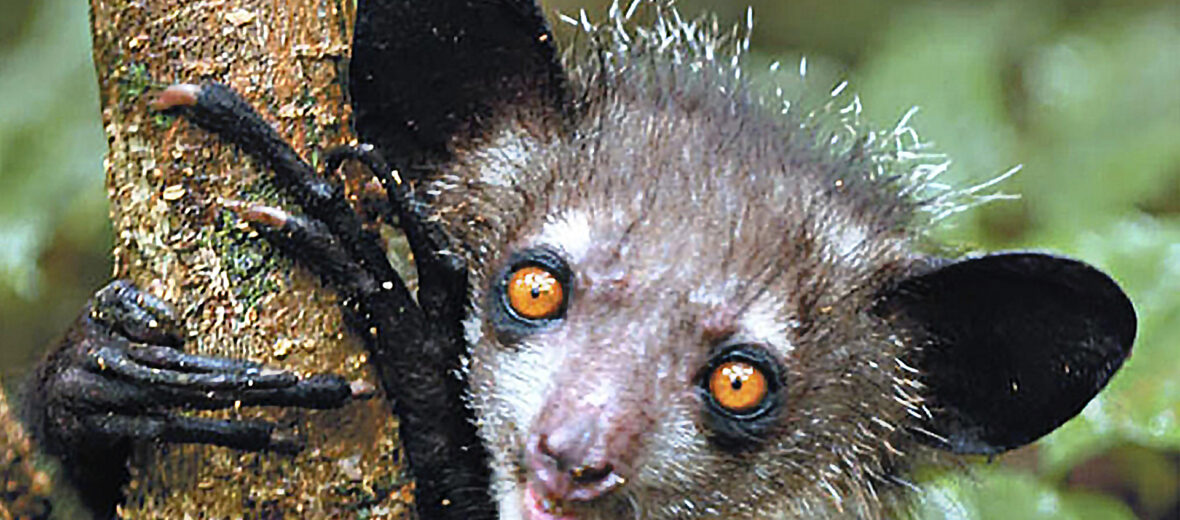
The aye-aye is a lemur, a primate that is native to Madagascar that not only has sharp rodent-like teeth that never stop growing but also a special thin middle finger used for probing for grubs to eat. Strange as they may look, they are really unique and very specialized critters. These incredible critters are listed as Endangered by the IUCN. This is due to habitat loss (at the hands of logging), trapping, and fire damage to the forests in which they live.
First the Stats…
Scientific name: Daubentonia madagascariensis
Weight: Up to 5 lbs.
Length: Up to 16 inches, plus a 24 inch tail
Lifespan: Up to 23 years
Now on to the Facts!
1.) The aye-aye is nocturnal (active at night)
2.) Aye-ayes are arboreal (They spend their lives in the trees)
3.) The diet of the aye-aye consists of insect larva, seeds, nectar, fruit, and fungi.
4.) With its specialized middle finger, it taps on the branches and trunks of trees and listens for movement inside with highly sensitive ears. If movement is detected, they will then use their sharp teeth and chew a hole in the area and use their finger to fish out the tasty grubs inside. This is called percussive foraging.
5.) Aye-ayes build multiple nests in the trees and often switch from nest to nest to help avoid predators.
But wait, there’s more on the Aya-aye!
6.) Based on the climate, the aya-aye mates between October – February.
7.) The females are polyandrous (mating with more than 1 male in a cycle). She will call repeatedly to lure males (up to 6 at a time). She comes into estrus (heat) every 2 – 3 years and gives birth to 1 offspring.
Did you know…?
The aye-aye was thought to be a large species of squirrel when it was first discovered.
8.) From birth, the infant aye-ayes emit an “eeep” or a “creee” sound to maintain contact with its mother.
9.) When aye-ayes get excited or bothered, their long, white hairs stand on end and give them a poofy look. It’s thought that they do this to appear larger and more threatening!
10.) Aya-ayes are typically solitary. Only coming together to mate.
Now a Short Aye-aye Video!
Also, check out the Critter Science YouTube channel. Videos added frequently!
Want to suggest a critter for me to write about? Let me know here.



